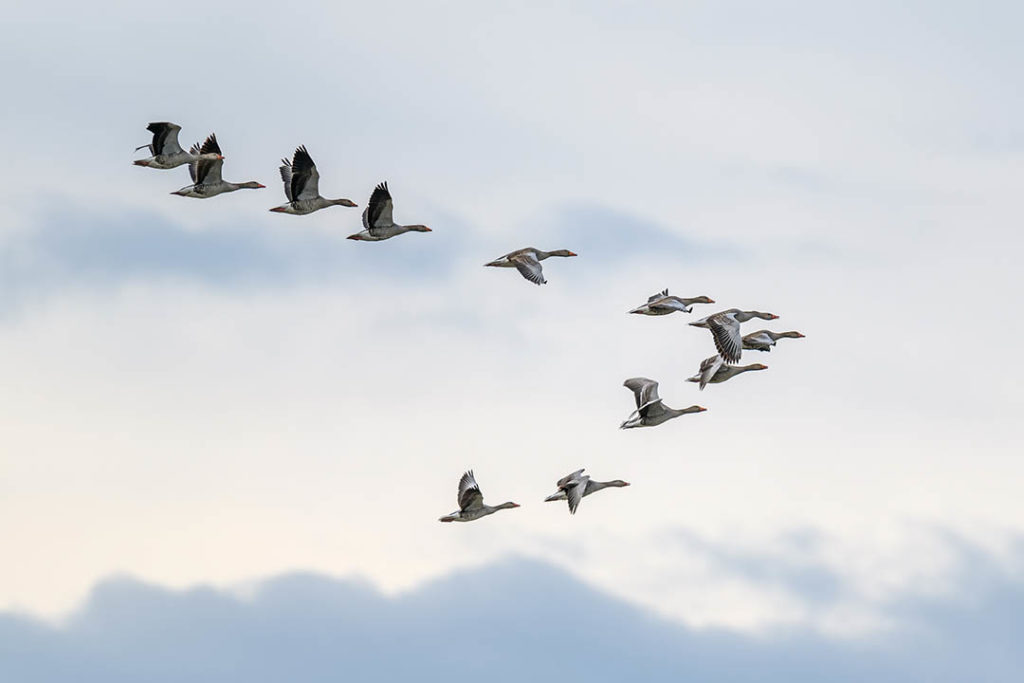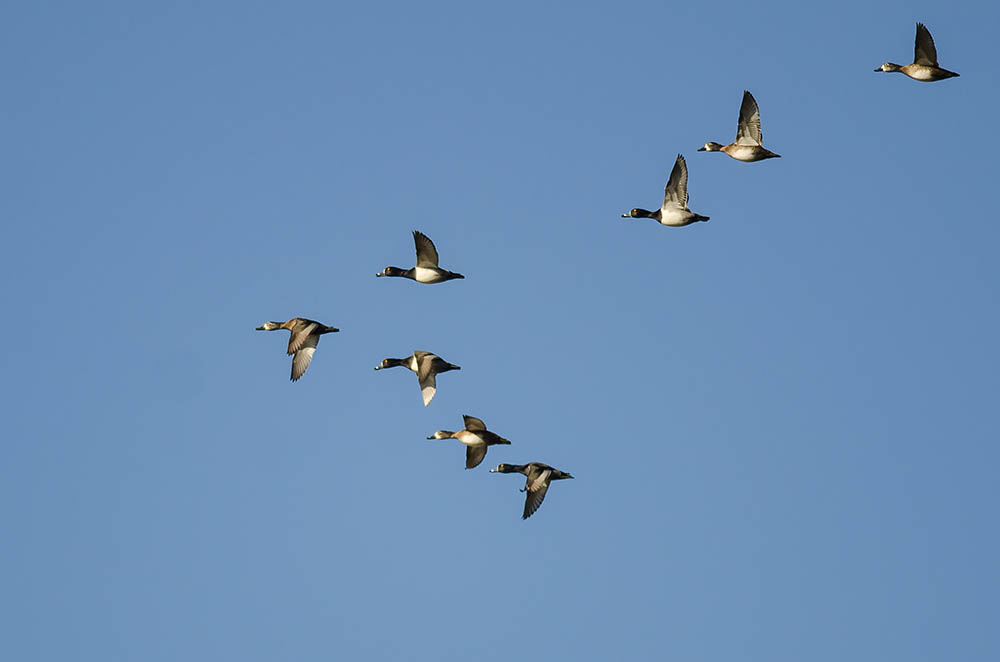Why Do Birds Fly in a V Formation? The 2 Main Reasons
Last Updated on

If you look up at the sky enough, it’s only a matter of time until you see birds traveling in some type of formation. But why do you commonly see birds fly in a V formation?
Not only does this formation keep them together and safer from predators, but it also dramatically reduces the amount of energy that they need to expend when flying. But there’s plenty more to know about why birds fly in a V formation.

Why Do Birds Fly in a V Formation?
While there’s no conclusive evidence as to why birds fly in a V formation, we know that there are two different benefits that they could be taking advantage of. First, it significantly lowers air resistance. Studies indicate that birds expend 20 to 30% less energy when flying in a V formation. This all has to do with aerodynamics. Birds time their wing beats to catch uplifting currents caused by the birds flapping in front of them, which helps minimize downdraft. This lets them fly with less energy, which is a big perk when they’re traveling over long distances.
While that energy savings might not seem like that much, some studies have shown that geese can fly up to 71% farther when flying in a V formation compared to flying on their own!
The second reason birds might fly in a V formation is that they’re simply following the leader and sticking together. When animals stick together, they reduce the risk of predators.

What Is the V Formation of Birds Called?
While it’s perfectly fine to call it a V formation, if you’re looking for a more technical term, it’s “flock echelons.” The V formation is a specific type of flock echelon, as any formation that birds form is technically a flock echelon.
So, even if you want to get specific, it’s still best to call it a V formation, since a flock echelon can refer to other formations too.
Do All Birds Fly in a V Formation?
While the V formation is what most people think of when they think of birds flying together, it’s not the only one that birds use. Another common formation that birds fly in is the J formation.
It depends on the type of bird for which formation they are more likely to fly in, but there’s definitely more than just the V formation!
Do Birds Change Leaders?
Yes! Flying in the front requires more effort than flying in the middle or at the end of the formation, and the birds share this burden by cycling out the position while flying.
So, while birds might use the V formation so they can fly easier and stick together, the lead bird is not the actual “leader” of the pack. Instead, they’re just the bird that is taking their turn at the front doing extra work.
That said, if a bird is at the front of the pack, they’re likely strong fliers, and they’re likely among the fastest and best navigators from the flock.

Why Do Geese Honk While Flying?
If you’re gazing up and watching a flock of geese flying in a V formation, there’s a good chance that you’re hearing them too. Geese need to stay together when flying, and they will fly in practically any weather conditions. Therefore, they can’t always rely on their line of sight when trying to stay in formation. By honking, they can hear each other, which helps them stay where they need to be. They also do it on a clear day so they can know how it should sound when they’re doing everything right!

Summing Up
When it comes to working together, birds have it all figured out. They know that they can only travel so far by themselves and that if they work together, they can do less work and cover impressive distances. That’s why they fly in a V formation or another type of flock echelon.
The next time that you see a flock of birds flying in a V formation, think of the teamwork and comradery that goes into this otherwise ordinary-looking task!
Featured Image Credit: Volodymyr Burdiak, Shutterstock
About the Author Robert Sparks
Robert’s obsession with all things optical started early in life, when his optician father would bring home prototypes for Robert to play with. Nowadays, Robert is dedicated to helping others find the right optics for their needs. His hobbies include astronomy, astrophysics, and model building. Originally from Newark, NJ, he resides in Santa Fe, New Mexico, where the nighttime skies are filled with glittering stars.
Related Articles:
10 Types of Hummingbirds in Arkansas (With Pictures)
8 Types of Hummingbirds in Nebraska (With Pictures)
5 Types of Hummingbirds in Idaho (With Pictures)
3 Types of Hummingbirds in Mississippi (With Pictures)
8 Types of Hummingbirds in Kansas (With Pictures)
5 Types of Hummingbirds in West Virginia (With Pictures)
5 Types of Hummingbirds in Ohio (With Pictures)
Where Do Nuthatches Nest? Nuthatch Nesting Habits Explained
